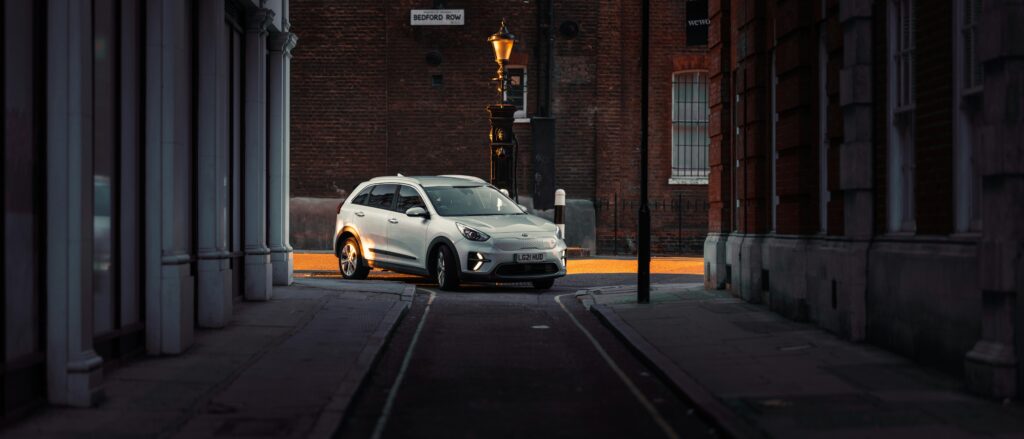Secure order and payment
28. 04. 2023
Things To Do On a Used Car Test Drive
Have you been thinking about buying a used car? Unsure about what you should be doing on a test drive?
This blog post will cover all you need to know about test-driving a used car. You will discover what checks should be carried out before you get behind the wheel, and what you should be paying attention to on the test drive, and you will learn about the paperwork and insurance checks that need to be done before the test drive.
Want to know how to register a used car with the DVLA? Need to know if you need a new registration for your vehicle when moving to a new country in Europe? Looking for information on registration plates in the UK? Click these links to find out more!
Pre-Test Drive Checks
Whether you are buying a used car through a reputable dealer or a private seller, there are a few checks that you should always endeavour to make before buying a used car. Carrying out these simple checks before you make a purchase will reduce your chances of buying a car that’s being sold illegally or has had major repair work carried out on it.
You should consider doing this no matter who you are buying the used car from.
Checking Vehicle Details
Gov.UK provides detailed information on the checks you should complete from a legal and safety standpoint before purchasing a used car.
In order to check that the information you have been provided about the vehicle is correct, you will need the vehicle’s registration number, make, model and MOT test number.
You will also need to see the V5C vehicle registration certificate (log book).
You can use this information to check the following through the GOV.UK website:
- Check the details you’ve been given match DVLA‘s information
- Check the vehicle’s MOT history
- Check if the vehicle has been recalled because of a safety issue
- Check the log book isn’t for a stolen vehicle
If you are satisfied that all of the information you have been given about the used vehicle is correct, legal, and up-to-date you can then arrange to see the vehicle in person and take it for a test drive.
Inspecting the Vehicle
You should expect to have to spend more time checking a used vehicle than you would with a brand-new car.
Not only do you need to ensure that the car meets your needs in terms of how the car drives, the practicality, and the size of the car, but you also need to check that a used car is in good condition.
Before you take a seat behind the wheel of a used car, you should make sure that you carry out a thorough inspection of the vehicle both inside and out and take note of any areas that are cause for concern/
That means looking over the outside, as well as inside of the car, under the bonnet, and in the boot.
Outer Checks
Firstly, be sure to take a good look for any damage to the body of the car noting any scratches, dents etc.
Look for uneven gaps between the panels as this may indicate problems underneath like shoddy repair work or damage from a historic accident.
Ensure the roof is in good condition. And if you are viewing a convertible, look for any tears in a soft top and check the roof operates smoothly.
The paint should be an even colour all over the car. If it isn’t, that could indicate bad repair work. Pay attention to any signs of rusting such as bubbling or crumbling paintwork.
Check the tyres have enough tread on them and make sure any wear is even across the tread. If it’s not, this could be a sign of something wrong with the suspension.
To check the suspension, push down on each corner of the car. If the car doesn’t smoothly bounce back up this could be a sign of a suspension issue.
Inside
Check that all lights and indicators work. This will involve getting in and out of the vehicle to ensure everything is working as it should.
Check that the mileage is consistent with the paperwork, then check the wear in the car matches the miles on the clock. If the odometer says low miles, but there is extensive wear within the vehicle, the mileage may be much higher.
Take a moment to see if the cabin is comfortable. Can you see and reach everything easily enough?
Some key things to check that people often forget are:
- Seat belts. Do they pull out and retract smoothly?
- Can you adjust and move the seat?
- Check the steering wheel. Can you turn it? And do any controls on the steering wheel work as they should?
- Do any electric windows or mirrors work as expected?
- Check that the ventilation blows hot and cold and listen for suspect noises
- Check all internal equipment including central locking, interior lights, and any fitted satnav.
When conducting your internal inspections, you should also consider whether there is enough room inside. Will you regularly have passengers in the back seats? If you use child seats, take them with you and check they fit.
Check the boot. Is there enough room for shopping bags, prams etc.? Do the rear seats fold easily? Be sure to check if there’s a spare wheel and that it’s in good condition when inspecting the boot too!
Test Driving a Used Car
Now you are ready to take the car for a spin. Turn the radio off and be aware of how the vehicle is running. You don’t want any nasty surprises when you get the car home.
When driving, listen for unusual noises or rattles coming from the engine. The engine should be running smoothly. Also, be sure to check for smoke when starting the car and when driving.
Be sure to pay attention to how the vehicle is steering. There should be no vibration. The steering should feel responsive and smooth.
Pay attention when changing gears. There should be no crunching. Does the clutch bite reasonably? If the pedal is too high, the clutch may be worn.
Ensure the brakes are responsive and the car comes to a stop in a straight line.
If you can drive routes that are familiar to you in your day-to-day driving routine. Practice parking, and be sure you can carry out any manoeuvres in this vehicle that you find you regularly need to use.
Not only are you checking to make sure that the vehicle is in good working order, you are also checking that you are comfortable and able to drive the vehicle well.
Are You Insured?
If you’re test-driving as part of a private sale, you will need to make sure that your insurance covers this.
If it doesn’t, there is a chance that the seller may be able to extend their own insurance to cover any test drive. You should always check the seller’s insurance if they claim this is the case.
Alternatively, ask your insurer for temporary comprehensive cover. This will be useful if you plan on test-driving several cars.
If you are satisfied that the vehicle meets your needs and is in good working order, then you are ready to go. Make sure that you always get a receipt of purchase when buying a used car that includes the details of both parties, it might also be worthwhile to take records of the sellers identification.
Are you thinking about taking your used vehicle abroad? You will need to show a Certificate of Conformity for your vehicle. We can help you to obtain a COC for your vehicle in a simple, hassle-free way. Simply click here to obtain your COC now.











